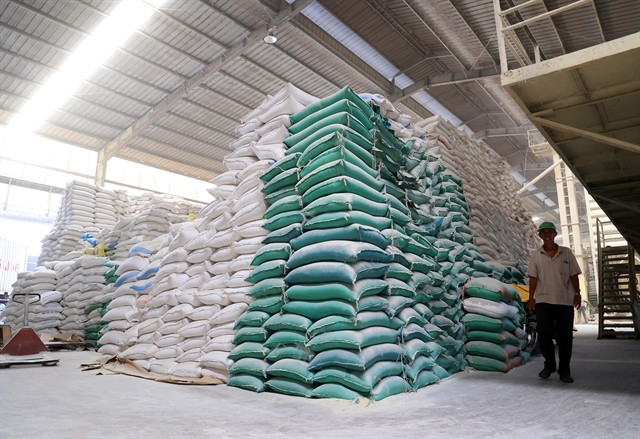Tags
Shifting cultivation trends fuel Vietnam’s record high rice imports
Despite being the world’s third-largest rice exporter, Vietnam has spent nearly US$1 billion on rice imports in the first nine months of 2024. The increase in rice imports is driven by a shift in rice cultivation trends.

According to the General Department of Customs, Việt Nam’s rice import turnover reached US$117 million in September, marking a 154 per cent increase year-on-year.
During the first nine months of 2024, Việt Nam spent $996 million on rice imports to meet domestic production and consumption needs, a 57.3 per cent year-on-year increase.
This figure sets a record for the rice sector, far exceeding the $860 million import turnover for the whole last year.
If this pace of imports continues in the next two months, Việt Nam could spend $1.3 billion on rice imports in 2024, despite being the world’s third-largest rice exporter.
Explaining this trend, Nguyễn Như Cường, Director of Crop Production Department under the Ministry of Agriculture and Rural Development said that rice products are categorised into various segments, including rice for cooking, rice used as raw materials for making cakes, noodles and phở.
Therefore, in recent years, aside from exporting, Việt Nam has also imported a significant amount of rice to compensate for any shortages, or to import from major exporters like India for food processing, by-products and animal feed.
According to businesses, the increase in rice imports is driven by a shift in rice cultivation trends. Farmers are now focusing on producing high-quality fragrant rice for export, while the domestic demand for making noodles and phở only requires lower-cost rice.
As a result, businesses have opted to import more affordable rice to reduce production costs.
Additionally, some export enterprises have had to import extra rice from neighbouring countries, including Cambodia, to ensure they can fulfil end-of-year orders on time.
Experts from the Việt Nam Food Association said that the demand for low-grade rice within the country is increasing, while Việt Nam is restructuring its rice sector towards higher-quality rice varieties. This makes the search for new rice sources a logical step.
The rice widely grown in India, which has good yield and low prices, is similar to Việt Nam’s IR50404 rice variety that was heavily cultivated in the past. Selling higher-value rice while importing cheaper raw rice for processing is considered economically advantageous.
Currently, Việt Nam also imports rice from Myanmar, Pakistan and Cambodia, with prices lower than domestically produced rice. On average, the export price of Vietnamese rice in the first nine months of 2024 was $624 per tonne, a 13.1 per cent increase compared to the same period in 2023. Meanwhile, imported rice prices range from $480-500 per tonne.
According to businesses, importing rice for processing is a logical part of trade activities. Imported rice not only fills the gap in the low-grade rice segment but also comes at a lower cost, ensuring profitability for companies.
As a result, rice imports do not affect domestic rice production. Instead, they help stabilise the prices and turnover of Vietnamese rice.
However, a representative from a rice importing company admitted: “It’s not easy to distinguish between Vietnamese rice and Indian rice, like comparing a Toyota with a BMW.”
Excessive imports of Indian rice by Việt Nam may lead foreign buyers to question the value proposition, pondering why they should purchase Vietnamese rice when cheaper options from India are available.
Therefore, alongside trade activities, there must be legal mechanisms to closely monitor rice imports, especially regarding the origin and source of the rice. — VNS
https://vietnamnet.vn/en/shifting-cultivation-trends-fuel-vietnam-s-record-high-rice-imports-2329475.htmlPublished Date: October 7, 2024






